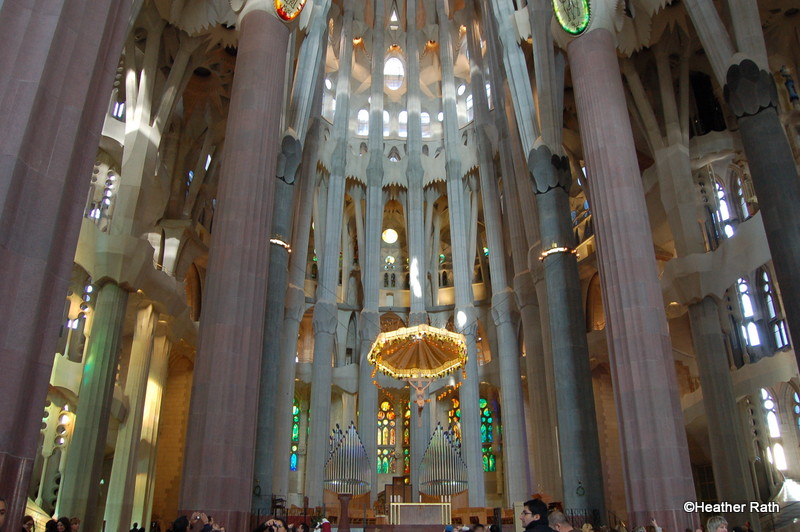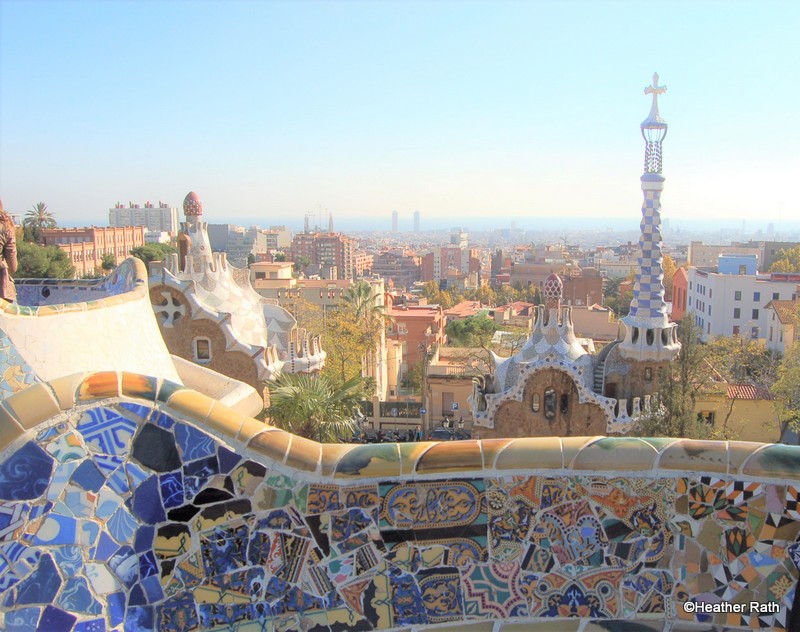La Sagrada Familia

Tallest Church in the World
The extraordinary basilica, La Sagrada Familia, has been in the process of construction for over 100 years now.
Adorned with symbolism, construction on this famous church, The Basilica of the Holy Family, began in 1882 in Barcelona, Spain. Completion of the steeples and most of the church’s structure is set for 2026, the centennial of its chief architect, Antoni Gaudí. Then, it will be the world’s tallest church. Map of Spain
Decorative elements of the church should be completed by 2030 or 2032.
Magnificent or Gaudy?
The Basilica de la Sagrada Familia (Spanish) is a showstopper. Symbolizing the life of Christ, the still-unfinished church evokes strong reaction.
An art historian described the buildings as growing “like sugar loaves and anthills” and handled with “ruthless audacity”. Equally outspoken opinions are the norm.

“The Greatest Piece of Creative Architecture…
…a Spirit symbolized in stone.” The architect “carried the Art Nouveau style far beyond its usual application as a surface decoration”.
Time Magazine described it as “sensual, spiritual, whimsical, exuberant”. George Orwell named it “one of the most hideous buildings in the world”. James Michener opined “one of the strangest-looking serious buildings in the world”.

Chief Architect
Antoni Gaudí was both praised and criticized for his monumental plans for the basilica. A Barcelona-based Spanish architect, his free-flowing works were greatly influenced by nature.
He developed a building technique known as equilibrated. This meant the building could stand on its own without internal bracing or external buttressing. He used tilted columns to create diagonal thrusts and lightweight tile vaults.
This equilibrated system is evident in the architecture of two city apartment buildings: the Casa Batlló (1904-1906) and the Casa Milà (1905-1910). Their floors were structured like clusters of tile lily pads.

Gaudí’s work in Park Güell also showcases his stunning creations using mosaics and coloured pieces of tile.

But his most outstanding commission came in 1883, when he was charged with the construction of la Sagrada Familia.
Gaudí died after being hit by a trolley car in Barcelona in 1926, a few weeks before his 74th birthday.
World Heritage Site
Along with six other Gaudí buildings in Barcelona, part of la Sagrada Familia is a UNESCO World Heritage Site. Only the Crypt and the Nativity Façade carry the UNESCO inscription. It cites, in part, “Gaudí’s exceptional creative contribution to the development of architecture and building technology….”

Spires
Gaudí’s original cathedral design called for 18 spires. These represented, in ascending order of height, the Twelve Apostles, the Virgin Mary, the four Evangelists and tallest of all, Jesus Christ.
Completion of the spires will mean la Sagrada Familia becomes the tallest church building in the world.
Bells
Plans call for tubular bells to be placed within the spires. Driven by the force of wind, their sound will reach down into the interior of the church.
Problems along the way:
—Construction interruption due to the Spanish Civil War in 1936.
—During that war, parts of the unfinished basilica, as well as Gaudí’s models and workshop, were destroyed by Catalan anarchists.
—an arsonist started a small fire, that took 45 minutes to contain, in the sacristy in 2011, damaging the area.
—concerns were raised over the stability of the basilica structure due to the proximity of the AVE* high-speed train tunnel. No damage to la Sagrada Familia is reported to date.
COVID-19 pandemic in Spain
Since March 11, 2020, construction has ceased. La Sagrada Familia is closed to the public indefinitely due to COVID-19.
* AVE:Alta Velocidad Española is a service of high-speed rail in Spain at speeds of up to 310 km/h (193 mph). Alta Velocidad Española translates to “Spanish High Speed” but the initials are also a play on the word ave, meaning “bird”.
Music of Spain and Barcelona
Tour of Barcelona
Travelled: November, 2010





